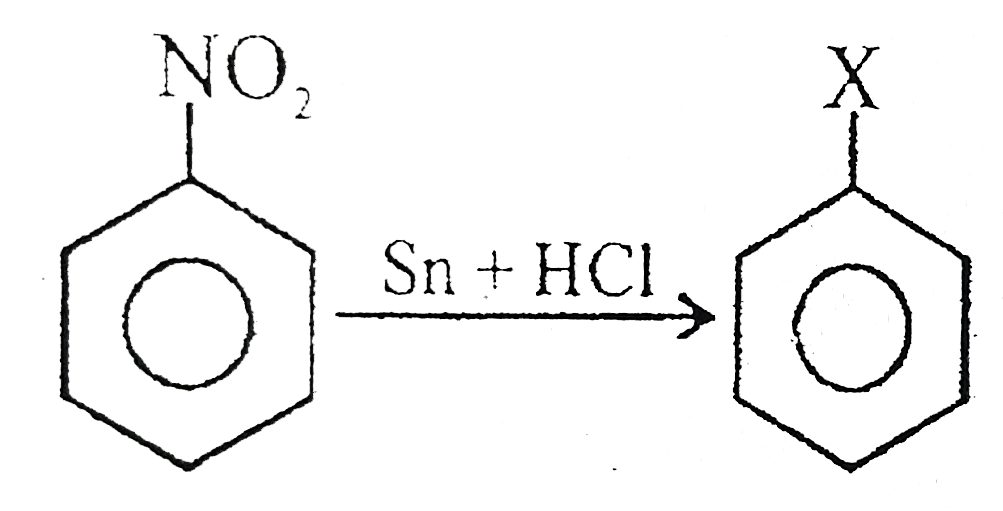In the following nuclear reaction 'x' stands for n→p+e−+x.
α−particle
positron
nutrino
antinutrino
The correct Answer is:D
To solve the problem regarding the nuclear reaction where 'x' stands for a particle in the decay of a neutron into a proton and an electron, we can follow these steps:
Step 1: Understand the Reaction
The reaction given is:
n→p+e−+x
Here, n is a neutron, p is a proton, and e− is an electron (beta particle). We need to determine what 'x' represents.
Step 2: Analyze Charge Conservation
In nuclear reactions, charge must be conserved.
- The neutron (n) has a charge of 0.
- The proton (p) has a charge of +1.
- The electron (e^-) has a charge of -1.
Calculating the total charge on the right side:
Charge of p+Charge of e=+1+(−1)=0
Since the left side (neutron) has a charge of 0, the right side must also have a total charge of 0. This means that 'x' must also have a charge of 0.
Step 3: Identify Possible Candidates for 'x'
The possible candidates for 'x' are:
1. Alpha particle (2 protons + 2 neutrons) - Charge: +2
2. Positron (e^+) - Charge: +1
3. Neutrino (ν) - Charge: 0
4. Antineutrino (ν̅) - Charge: 0
From the candidates, we can eliminate the alpha particle and the positron because they do not have a charge of 0.
Step 4: Determine the Nature of the Decay
The reaction given is a beta decay, which typically involves the transformation of a neutron into a proton, emitting an electron and an antineutrino.
Step 5: Conclusion
Since 'x' must be a neutral particle that is emitted during beta decay, the only suitable candidate is the antineutrino (ν̅).
Thus, the answer is:
x = Antineutrino (ν̅)
Final Answer:
Option D: Antineutrino
---
The reaction given is:
n→p+e−+x
Here, n is a neutron, p is a proton, and e− is an electron (beta particle). We need to determine what 'x' represents.
In nuclear reactions, charge must be conserved.
- The neutron (n) has a charge of 0.
- The proton (p) has a charge of +1.
- The electron (e^-) has a charge of -1.
Charge of p+Charge of e=+1+(−1)=0
Since the left side (neutron) has a charge of 0, the right side must also have a total charge of 0. This means that 'x' must also have a charge of 0.
The possible candidates for 'x' are:
1. Alpha particle (2 protons + 2 neutrons) - Charge: +2
2. Positron (e^+) - Charge: +1
3. Neutrino (ν) - Charge: 0
4. Antineutrino (ν̅) - Charge: 0
The reaction given is a beta decay, which typically involves the transformation of a neutron into a proton, emitting an electron and an antineutrino.
Since 'x' must be a neutral particle that is emitted during beta decay, the only suitable candidate is the antineutrino (ν̅).
x = Antineutrino (ν̅)
Option D: Antineutrino
Similar Questions

In the above reaction 'X' stands for
View Solution
In the above reaction 'X' stands for
View SolutionConsider the following nuclear reactions involving X and Y.
X→Y+.42He
Y→.8O18+.1H1
If both neutrons as well as protons in both the sides are conversed in nuclear reaction then moles of neutrons in 4.6 g on X :
View SolutionWhat is X in the following nuclear reaction? N147+H11→O158+X
View SolutionWhich one of the following nuclear transformation is (n,p) type ?
View SolutionIn the following nuclear reaction
.13Al27+.2He4→.15P30+X,X will be
View SolutionSolve the following linear inequation in R: −4x>30, when x∈N
View SolutionSolve the following linear inequation in R: 12x<50, when x∈N
View SolutionSolve the following linear inequation in R: 4x−2<8, when x∈N
View SolutionWhich of the following is correct for a nuclear reaction ?
View Solution
